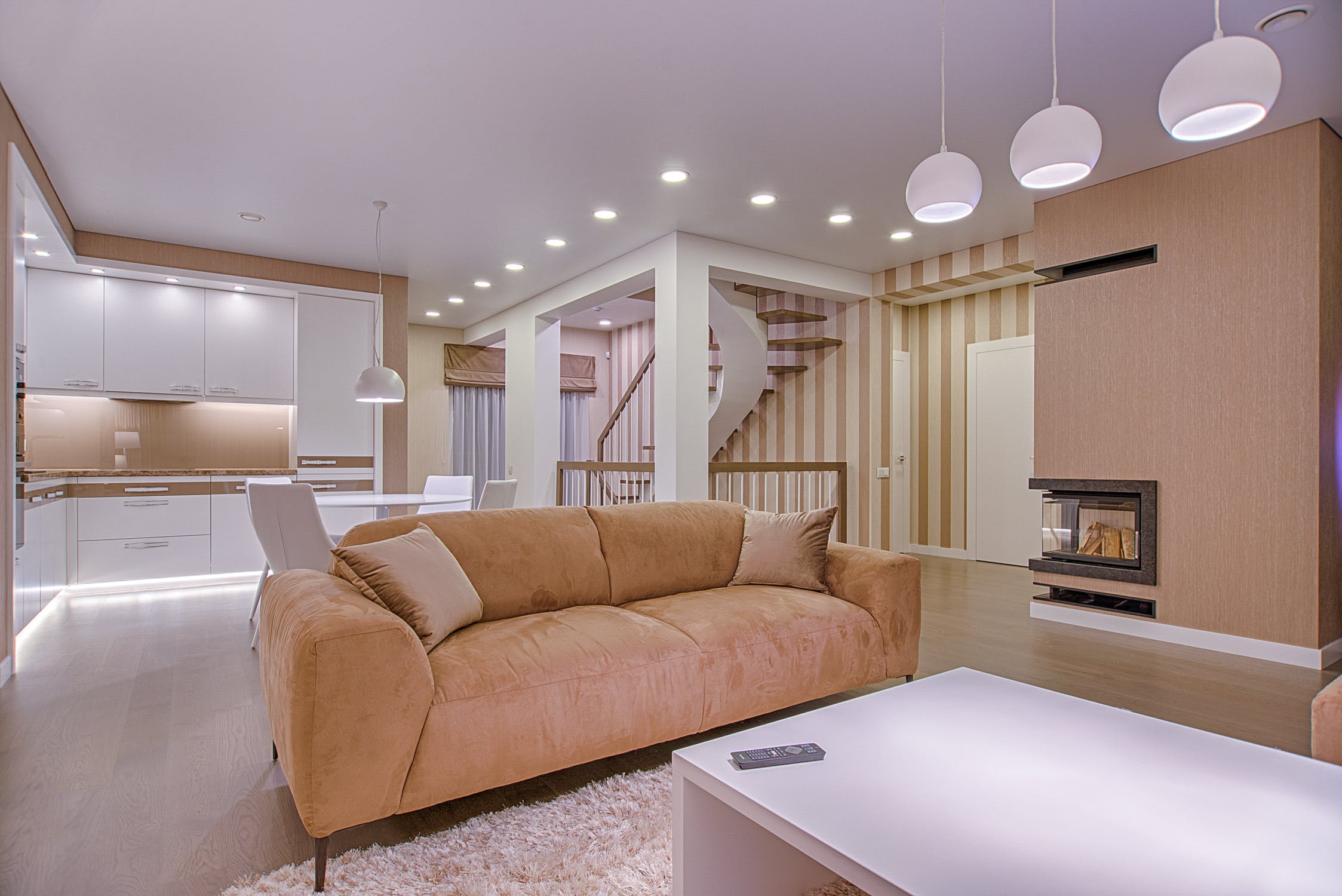How to Get the Best Lighting for Your Home
Lighting can be a difficult challenge to face when it comes to your home. Each room is so different that the lighting ranges wildly. Learn more about the available bulb options, different types of lighting and how they relate in this room-by-room guide.

Lighting can be a difficult challenge to face when it comes to your home. Each room is so different that the lighting ranges wildly. Learn more about the available bulb options, different types of lighting and how they relate in this room-by-room guide.
Types of Light Bulbs
- Incandescent ~ Most commonly used because it is also the least expensive. Tends to be a warm hue. Can last up to 1,000 hours but are not always the most energy efficient.
- Halogen ~ Similar to incandescent but give off a cooler color. These lights try to imitate natural light. They are a little more energy efficient but also more expensive. Remember not to use bare hands when changing a halogen bulb because the smallest residue of oil from a human hand can rub off on the bulb and create an atmosphere where the bulb warms too quickly when the lamp is turned on. This can cause the bulb to explode, so be careful!
- Fluorescent ~ A flat cold light, typically used to light up large areas like classrooms, offices, basements or attics.
- Compact Fluorescent ~ Consume a quarter of the energy of incandescent bulbs and last ten times as long. Compact Fluorescent Bulbs (or CFLs) tend to have warmer tones.
- LED ~ stands for “Light-Emitting Diode” and although it is the most energy efficient and longest lasting bulb on the market, LEDs only give off directional light and don’t give lighting to and entire room. To fix this issue, there are some LEDs that come in clustered groups but these tend to be the most expensive model available.
Definitions
Before getting into the nitty gritty of lighting, you should understand some common terms used.
- Ambient Lights ~ general lights
- Task Lights ~ useful lights (example, food prep)
- Accent Lights ~ used to highlight artwork or other details in your home
- Kelvin ~ determines the color, higher number means cooler color vs lower number means warmer color
- Lumens ~ measures brightness
- Wattage ~ measures energy consumption
Lighting Guide By Room
Living room (1,500 - 3,000 total lumens)
Living rooms will take all three levels of lighting mentioned earlier. For ambient lighting, the best option is to have a central ceiling light combined with corner ceiling lights for maximum illumination. Task lighting can be fulfilled using lamps with LED bulbs near seating areas to be used for reading and other functions. Accent lighting can spotlights used to highlight any artwork or special decorations in the room. DImmers can also be added to the room for versatility.
Kitchen (5,000 - 10,000 total lumens)
Kitchens are always a challenge when it comes to lighting because it needs ambient and multiple task lights at the same time. A dimly lit kitchen can make it feel small and gloomy while a brightly lit one feels open and welcoming. Try to allow sunlight to enter the room if you can. Think about replacing the curtains for sheer curtains or maybe removing them altogether. Pendant lights can be used as a source of lighting and a beautiful focal point for the room, especially if there is an island. Lights above, below and even inside the cupboards can help with task lighting and food prep visibility. Additionally, placing the sink underneath a window is always a good strategy to use natural light to your advantage.
Bathroom (4,000 - 8,000 total lumens)
Task lighting is crucial for any bathroom and can be accomplished using vanity lighting around the mirror. This helps illuminate faces for grooming. The best way to do this is to add lights on either side of the mirror. A common mistake is to put lights on the ceiling above the mirror. This causes unwanted shadows on the face. In addition to the vanity lighting, a central fixed ceiling light can be used as a substitute for natural light. When it comes to choosing bulbs, a crisp white is best for making the room seem more open and natural. Try and add a light above the tub or shower in the room because these areas tend to be very dim. If possible, install dimmers to allow for eye adjustment when using the bathroom in the middle of the night or early morning.
Bedroom (2,000 - 4,000 total lumens)
For ambient light, choose a central light fixture for the middle of the ceiling. Central lighting can also help as a substitute for natural light. Small table lamps placed on nightstands near the bed can be used for task lighting or for a dim light for relaxation. Closet lighting is also essential to be able to see all your belongings and help with organization.
Dining room (3,000 - 6,000 total lumens)
Lights above the dining room chairs can cast an unwanted shadow on people’s faces. Instead, opt for lights that showcase the table. A chandelier is frequently used in this case and creates a great focal point for the room. Wall sconces can also be used in the dining room to provide visibility and add an aesthetic element. Typically, warm lighting is recommended to provide a cozy and relaxed feeling.
Hallways & Stairs (1,200 - 4,000 total lumens)
Typically, these areas only require ambient lighting with the exception of the occasional artwork or any other special architecture. These areas can be illuminated with a simple ceiling fixture or wall sconce. For accent lighting, use bulbs with narrow beams or directional shades.

